Nuetech Nitromousse

Inner tubes are the standard means of tire inflation and pretty much have been since the dawn of time. But then, professional motocross teams and off-road teams (that had special access and could afford them) started running these things called mousses (which is just “foam” in French). Now mousses are available for everyone and there are a few brands that offer them. The benefit is clear - the possibility of a flat is gone, but the downsides are a little more subtle. More weight, much harder to install/remove, different feel than air-filled tubes and questionable durability are all on the cons list.
The Nuetech Nitromousse claims that it addresses all of those downsides by constructing its mousses using a high concentration of nitrogen packed in a proprietary blend of elastomers. They claim that their “micro-matrix” doesn’t require break-in, and has a more lively, less “dead” feeling than other mousse inserts. They also claim that a Nitromousse has twice the durability of other mousses.

Nitromousse Features
- Micro-matrix of proprietary elastomers
- Contains a high concentration of nitrogen
- Low-pressure predictable ride
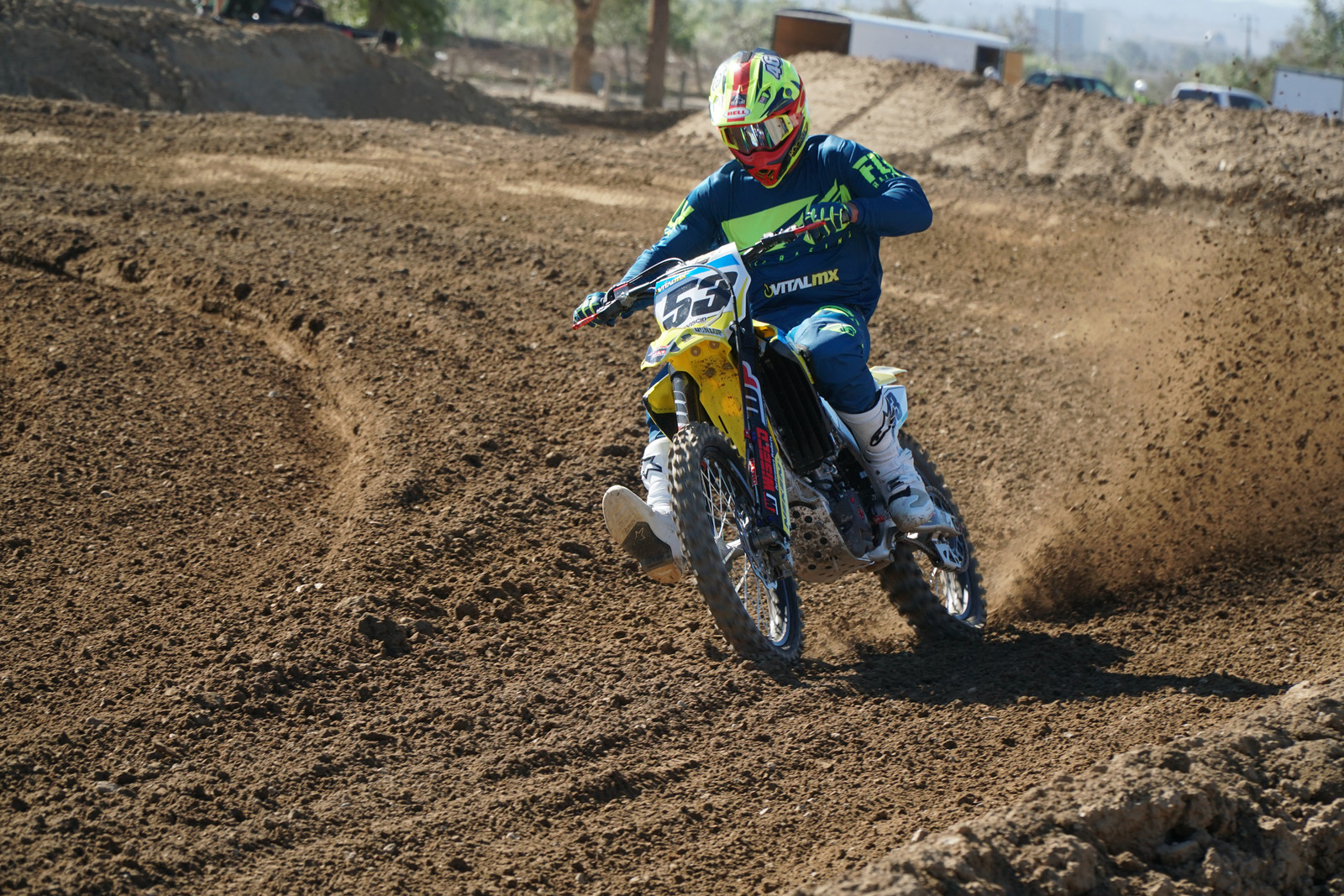
First Impression
Before we even ordered a set to test, one thing that is definitely different about Nuetech is that they offer 11 different sizes of mousses. The reason is, in their testing and development of the Nitromousse they were finding that even tires marked the same size from different brands had slightly different internal volumes. Therefore, they couldn’t really make just one 21-inch front and 19-inch rear and call it good. They measured nearly every common tire brand and size (full list here) to match up what size mousse can be used. Since we installed them on our 2019 Suzuki RM-Z450 we ran the stock Bridgestone Battlecross X30R (80/100-21 front, 110/90-19 rear) and ordered the NM21-220 for the front and NM19-280 for the rear.
One thing that was a little weird was that, according to the fitment guide, these same size mousses should work with Dunlop MX33s, which we mounted on the RM-Z, but the rear tire bead wouldn’t set 100 percent. It was still rideable, and I was thinking that the bead would set once the rear tire rotated fast enough, but it never popped into place. Therefore, we went back to the Bridgestones.
Before getting them on the bike, we weighed them to see how they compare to standard tubes:
Type of tire insert | Front Weight | Rear Weight |
Stock tube | 1.29 lb (588 g) | 2.27 lb (1,031 g) |
Nitromousse | 2.99 lb (1,357 g) | 4.70 lb (2,134 g) |
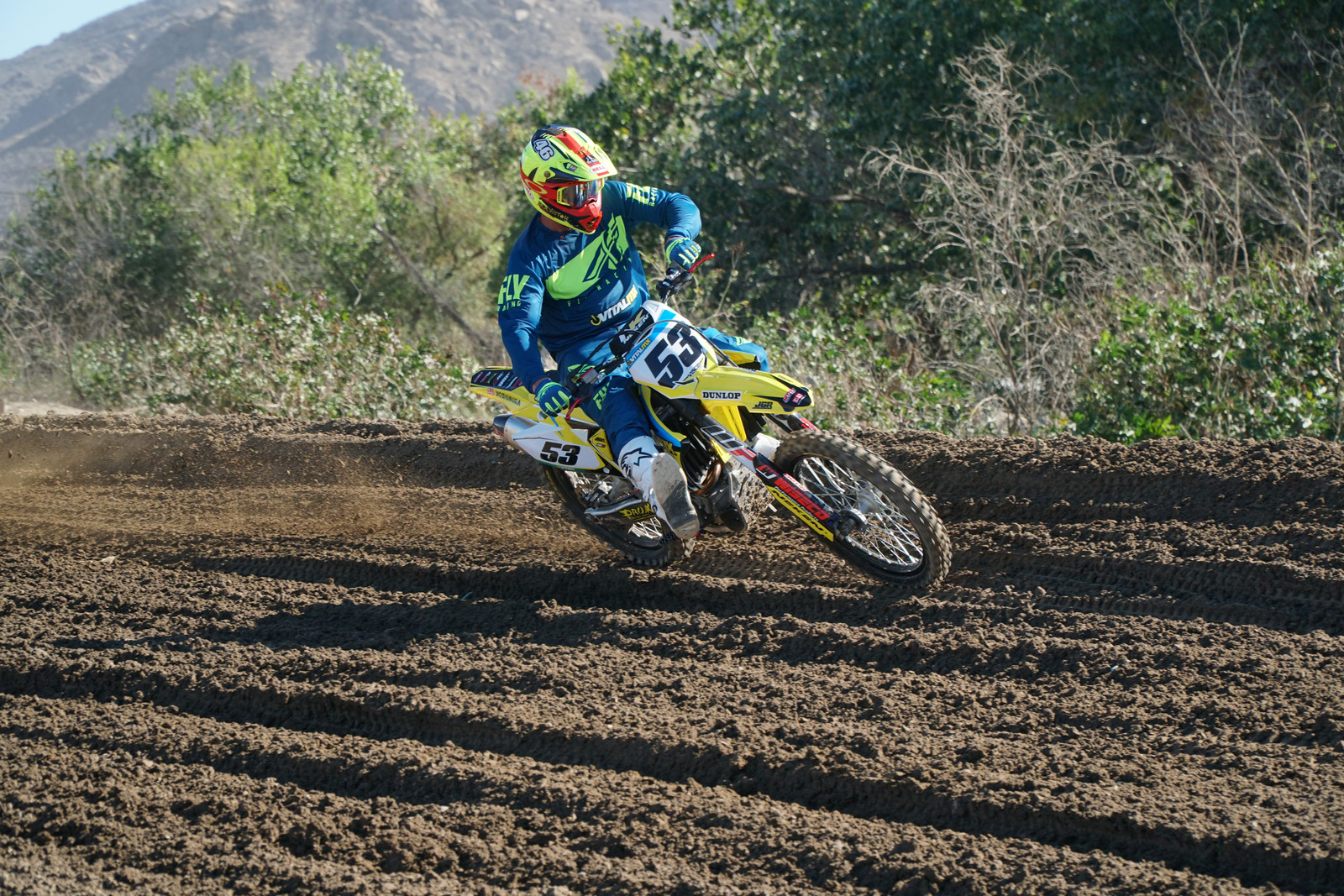
Installation
This is where some riders throw in the towel. Most have heard horror stories or seen videos of people on struggle street with tire irons flying in all directions and cursing at an inanimate object. But my experience really wasn’t that bad.
I’ll be the first to admit I’m not good at, nor do I enjoy, changing tires. But I decided to just approach this as a typical motorcycle guy would in his garage with standard tools. Now, you can make your life way easier by either having a shop install them or buying a tire changing machine like the Rabaconda, but those both cost a lot of money. I do have to say, the more tire irons/spoons you have the better. I used one mega tire iron, two Moose Ty-er irons, and three flat, trailpack-style irons, as well as a cam-buckle strap, C-clamps, and vice grips. Also, you need plenty of mousse lube, which is provided with the mousses. This is not only for installation but essential to keeping heat from breaking down the mousse prematurely, by reducing friction between the mousse and the tire.
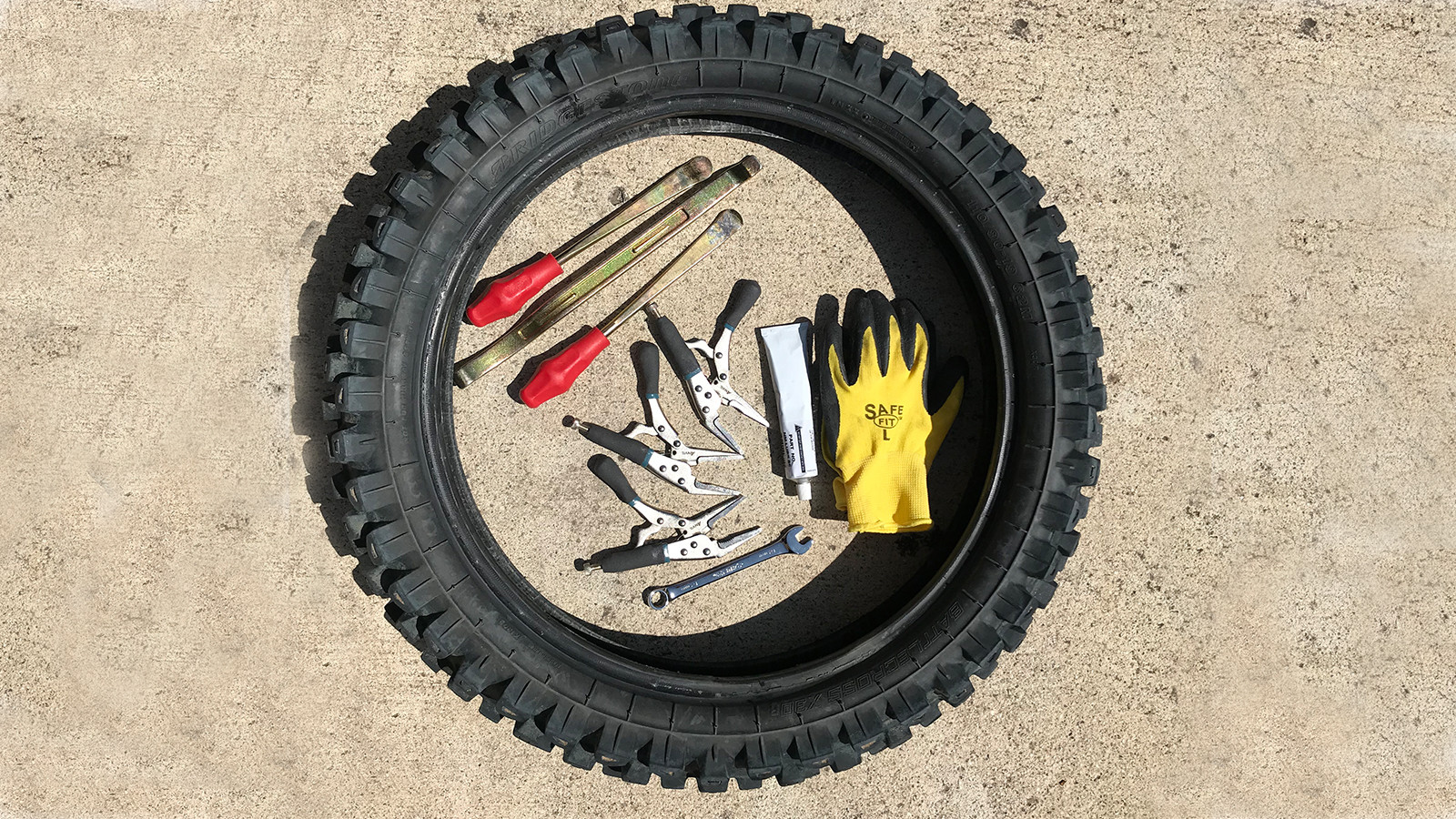

After watching the videos they have on the Nitromousse website, I tried using vice grips like Bead Buddies, but that didn’t work very well and scratched up the rim. If you have Bead Buddies, grab as many as you can. I was able to do it without them but it was a struggle. To start, you need either the C-clamp or cam-buckle strap to get the tire and mousse started on the rim. Without something holding them together, the mousse just pushes everything apart. I started at the rim lock to make sure the first bead went between the rim and lock. Getting the first bead on is pretty self-explanatory and doesn’t require any other techniques, just make sure the strap or C-clamp is really tight.


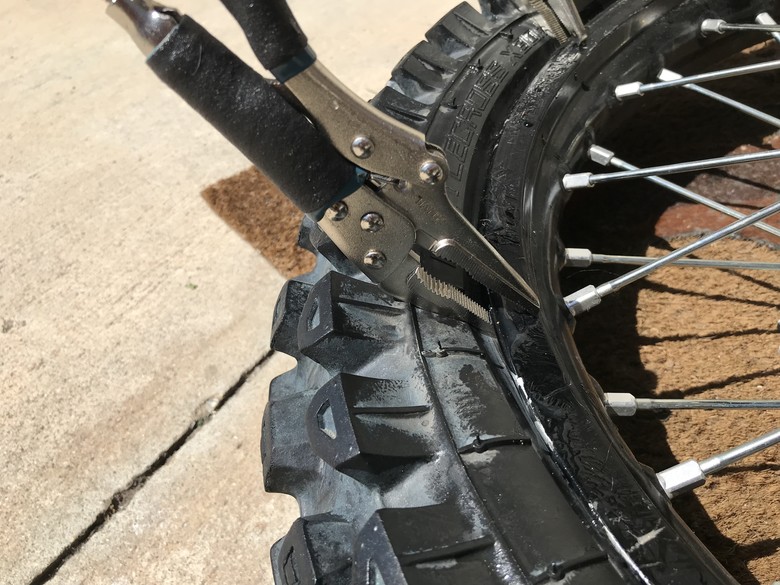
Getting the next bead on the rim is where patience comes in. During a normal tire change with a deflated tube, the key is to make sure the beads of the tire drop down into the center of the rim so there is enough slack for the other edge of the bead to fit over the rim. With a mousse in there, this is impossible. The first half of the second bead goes on pretty standard but this is when you need to ad either extra tire irons, Bead Buddies, or vice grips to the rim so that the section of the bead you’ve already got on the rim and slide deeper into the rim. It’s not going to drop into the center like with a flat tube, but you just want to make sure that it isn’t popped onto the rim, which it wants to do. The plus side to the mousse is that you can’t puncture it and therefore you can get super aggro with huge tire irons. Since I was just using lots of irons to keep the bead down, I used a combo of kneeling on one side and standing with my foot on the tire irons on the other to then get the last bite of tire onto the rim.I should also mention that gloves, knee pads, and a piece of rug or welcome mat (if you are doing this on the floor as I did) are very helpful. All in all, it took about 35-40 minutes once the wheel was off the bike to take off the tire, lube up the mousse, and get the tire back on the wheel.
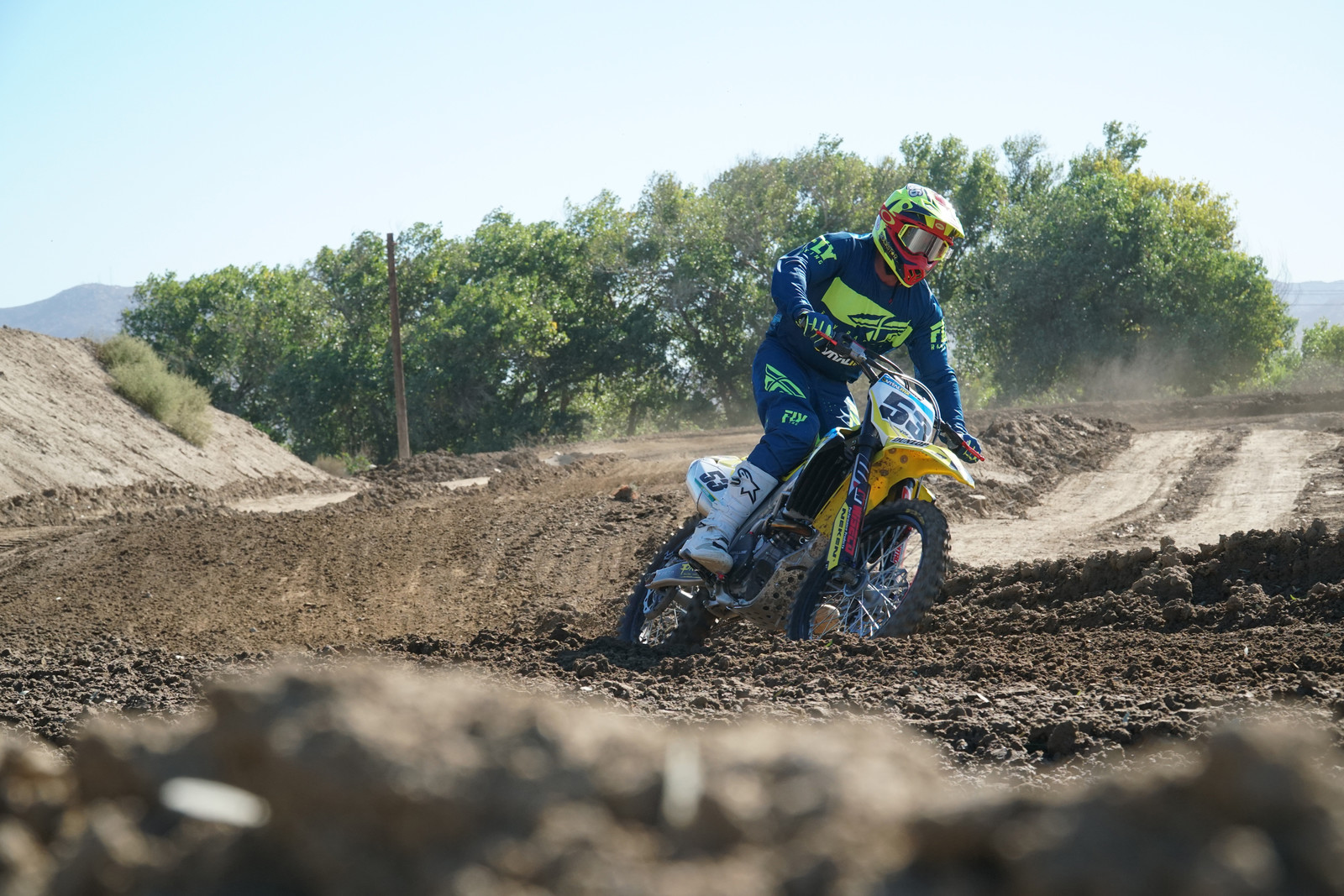
On The Track
Obviously feel is a major question with mousses and overall, I’m not unhappy with the Nitromousses on the track. For one, it is very nice to not have to check tire pressure or even bring a tire gauge and pump. But, on the other side of that, if you are super picky about tire pressure and want to adjust it for conditions and different tracks, then you are SOL.
The first day riding with them they felt about 13-14 psi, which isn’t that high for the track. They felt surprisingly normal even on our very first moto. Just like Nitromousse claims, there is definitely not a dead feeling to the mousses. In fact, they might be too springy. Some of our other riders were saying that they might want to slow down the fork rebound because there is more bounce than they normally feel with tubes. If this is what Nitromousse wanted, then they nailed it. But if they were going for a tube feel they might have overshot the bounce factor a little bit. Keep in mind though, this was more at the beginning of the test, within the first 2-3 hours of riding.
After that, they did break in and over the 20 hours of ride time on them, they did get gradually softer until they now feel like 9-10 psi. But since they can’t go flat they get a boatload of traction and work really well at this “tire pressure.” That being said, the front would sometimes roll when coming into turns with the bars turned aggressively. Again, more of a low pressure feeling but we didn’t have the tires coming off the bead or anything like that. Out back, there weren’t any negative effects of the lower pressure feel and it also seemed less bouncy than the front. It still didn’t have a dead feeling but didn’t spring back as much as a tube would the later we got in the test.
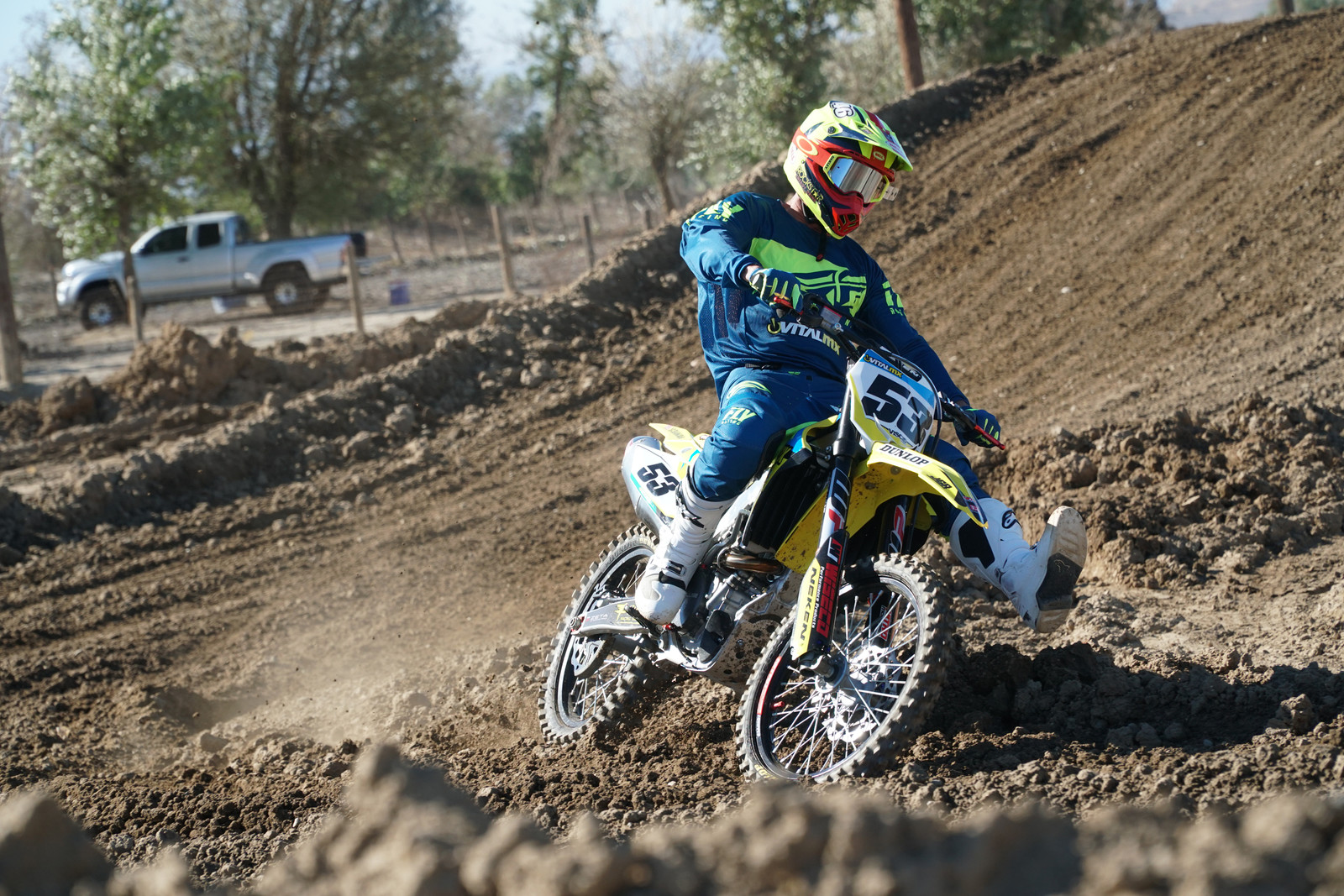
Overall
If you cannot afford a flat, and you are racing motocross (not off-road where the “dead” feeling mousses are preferred) the Nitromousses are a great option. The installation isn’t easy but it isn’t impossible either, and the fact that you cannot get a flat makes their “pretty good” performance not much of a trade-off. What we sort of don’t like about mousses, in general, is that their performance isn’t consistent throughout their use. They slowly feel softer and softer, unlike a tube that you can pretty much run indefinitely. At 20 hours our Nitromousses are still on the bike, and we aren’t ready to swap them out yet, but we will if the “pressure” continues to go down.



































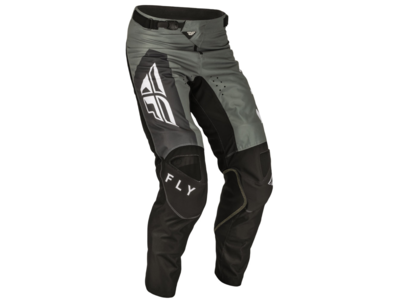













0 comments
Post a reply to: Tested: Nitromousse Foam Tire Inserts